Have you ever seen Scottish Highland cows? They’re so adorable! We are just now learning about these beef and dairy cows from Scotland as we have acquired three Scottish Highlanders of our own to raise, and are borrowing a bull for breeding.
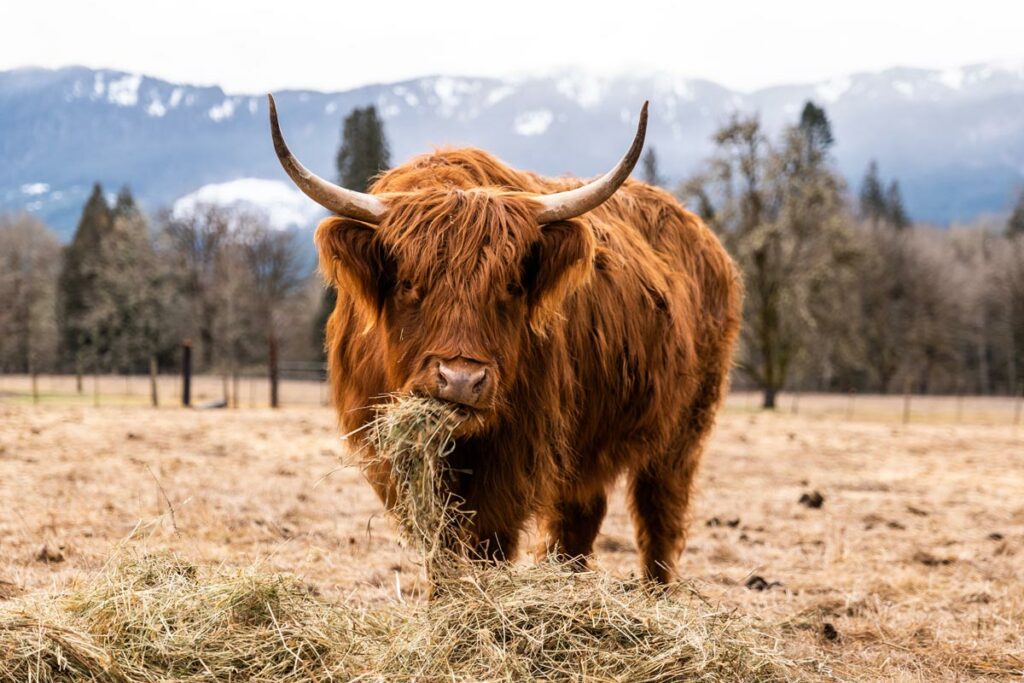
If you’re currently researching dairy cows, here are eight things you need to know when keeping a family milk cow and signs to watch for with an expecting cow. Or, if you’d like to know more about raising grass feed beef, you can read more here.
Why I Love Scottish Highland Cows
The look of these cows is one of the main reasons why I love them. They have long horns and beautifully colored shaggy long hair. We have our first new herd of Scottish Highlanders that are grazing at The Norris Farmstead.
Honestly, when I knew we were going to open an AirBnB, these furry cows were among my first thought. I don’t know about you, but if I had the chance to stay somewhere and look out the window at these adorable cows grazing in the field, I’d book that stay in a heartbeat.
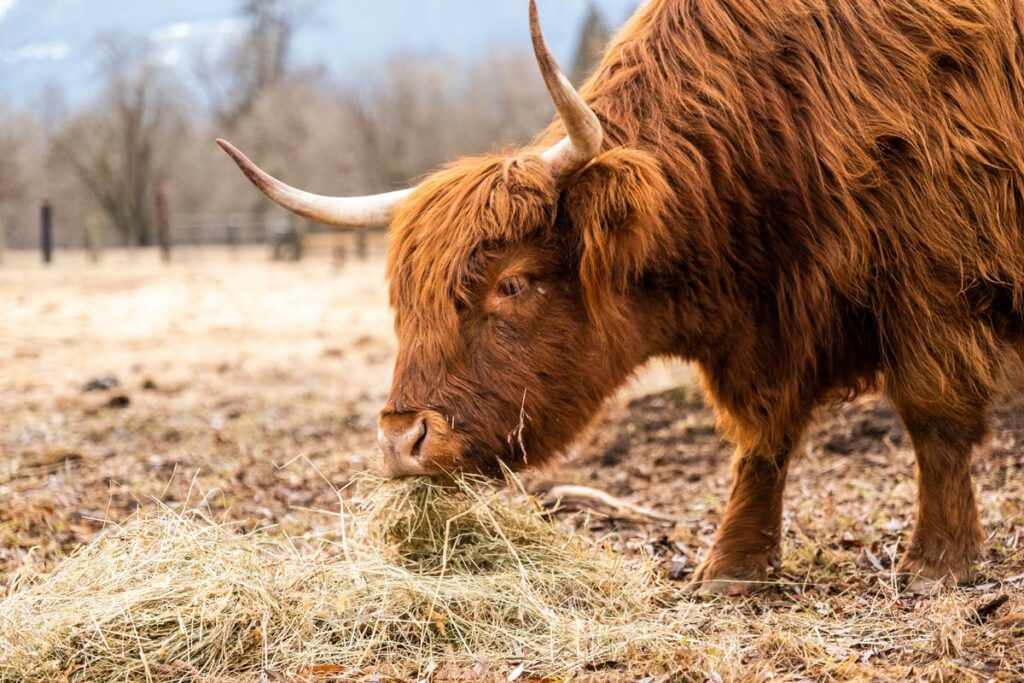
Unique Cattle Breed: Scottish Highland Cow
Scottish Highland cows are a very unique breed. For starters, they’re known to be exceptionally friendly and gentle cows. They originated in Scotland, and their horns can grow up to six feet.
They can thrive in various climates (especially cold climates), and, on average, they live longer than most other cattle, as their life span is between 15 to 20 years.
Because our cows are new to us, even though they’re known for their gentle disposition, I still recommend keeping a good distance and being cautious until you know the temperament of each individual animal. As with any breed of animal, there are always outliers, so safety is always first.
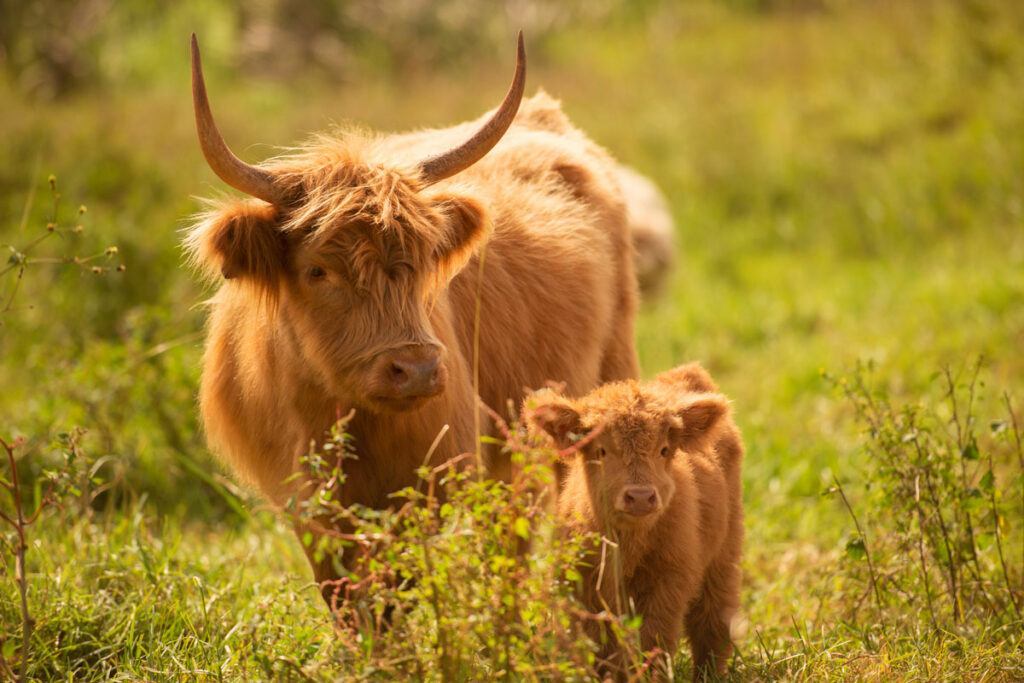
Subscribe to Melissa K. Norris!
Get updates on the latest posts and more from Melissa K. Norris straight to your inbox.
We use your personal data for interest-based advertising, as outlined in our Privacy Notice.
Good for Milk
I see the question often asked if you can drink Scottish Highlander milk. Absolutely! They have wonderful milk that’s rich in butterfat, protein, and calcium.
Their milk will make incredible butter, yogurt, cheese, etc.
As with any dairy cow, you’ll need to breed them and get into a routine of breeding and milking, just as with any dairy cow.
Scottish Highlanders breed at two years, not one and a half, as most other cattle do.
But honestly, have you ever seen a photo of a Scottish Highlander calf? They look like teddy bears! (See the stock image above for cuteness!)
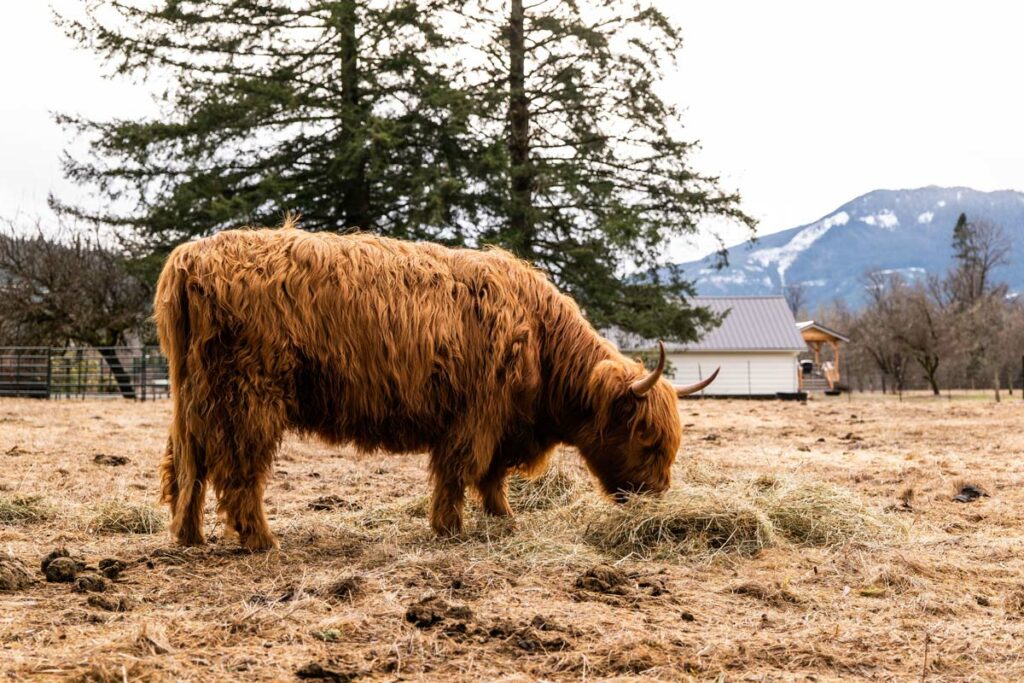
Good for Beef
Scottish Highlanders are known to have pretty lean beef. The meat has a marbling to it, like Wagyu beef, not Angus, because of the inner and outer layers of fur.
They will take a bit longer to get up to full butcher weight, so that’s something to consider if you’re wanting to raise them for beef cattle (more on this below).
Great Foragers
So let’s talk about what good foragers they are, what they eat, and facts about their growth.
Unlike other cattle, these cows are exceptional and much heartier foragers. They will eat blackberry vines, poison ivy, and honeysuckle vines. If they can reach it, they will eat it.
They’re great for restoring pastures or wooded areas as well. They’ll clean up entire woods that other cattle may not even survive in.
If you have a field or wooded area that needs to be cleared, you could clear acreage while raising food for your table. Talk about a win-win!
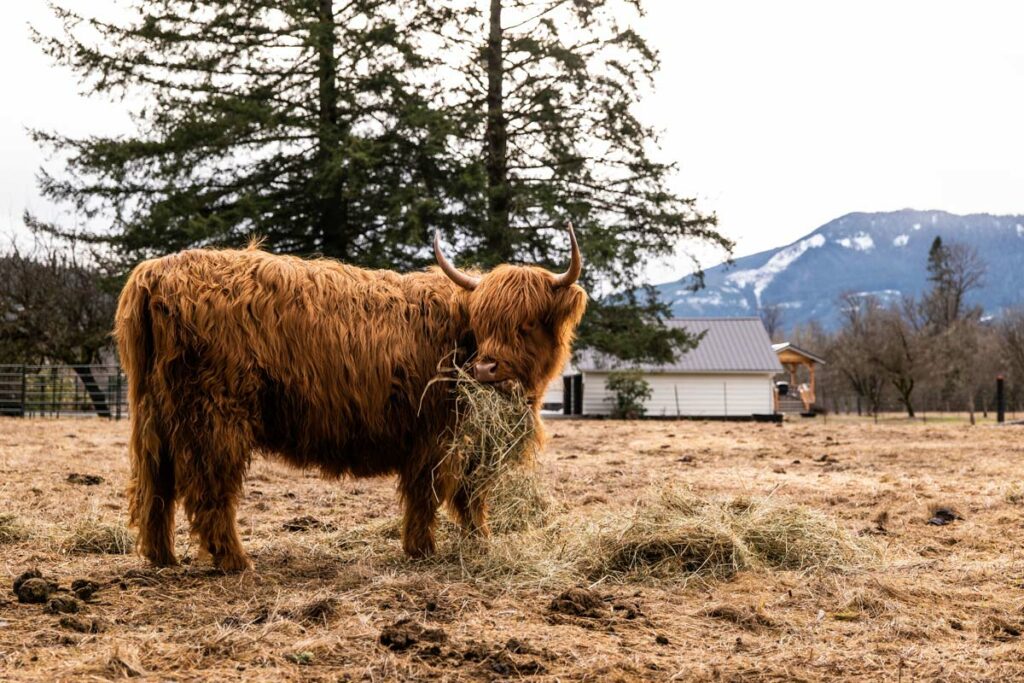
Growth Facts
It’s important to note that Scottish Highland cows do take longer to grow and get to butcher weight than most beef cows, and they will provide less overall meat than other breeds.
In fact, Scottish Highlanders take an extra year to mature compared to other cattle, so they are ready to butcher in about three years, instead of the average two for other breeds.
Trimming Hooves
Because Scottish Hyland cows are used to the rocky mountains of Scotland, where they naturally get ground down from the rough terrain, they will need their hooves trimmed once to twice per year.
This is best done by a professional farrier since it requires special equipment and knowledge.
Cow Hoof Trimming
Why bother trimming their hooves? If you don’t trim their hooves, severe cases can lead to deformity and the development of arthritis.
Arthritis shortens the life of the animal (and this shortens your return on investment if it’s your breeding stock). Not only does it decrease their life, but if it’s painful to walk then they’re likely to eat and drink less, which means a smaller birth weight of calves and smaller weight of animals at harvest time.
This also affects pasture management as they’re unable to graze as far, allowing some areas of the field to grow up and some areas to remain unfertilized by their manure.
Longer hooves are more prone to breakage. This leads to hoof rot and a higher chance of infection.

What do They Eat?
The beauty of this breed is that they can eat a variety of feed. As mentioned above, they’re great foragers. But they also eat grass, hay, straw or cereal grains, barley and wheat, and even turnips and peas.
They eat less food on a daily basis than other cattle. But since they take an extra year to mature, your feed costs are still about the same.
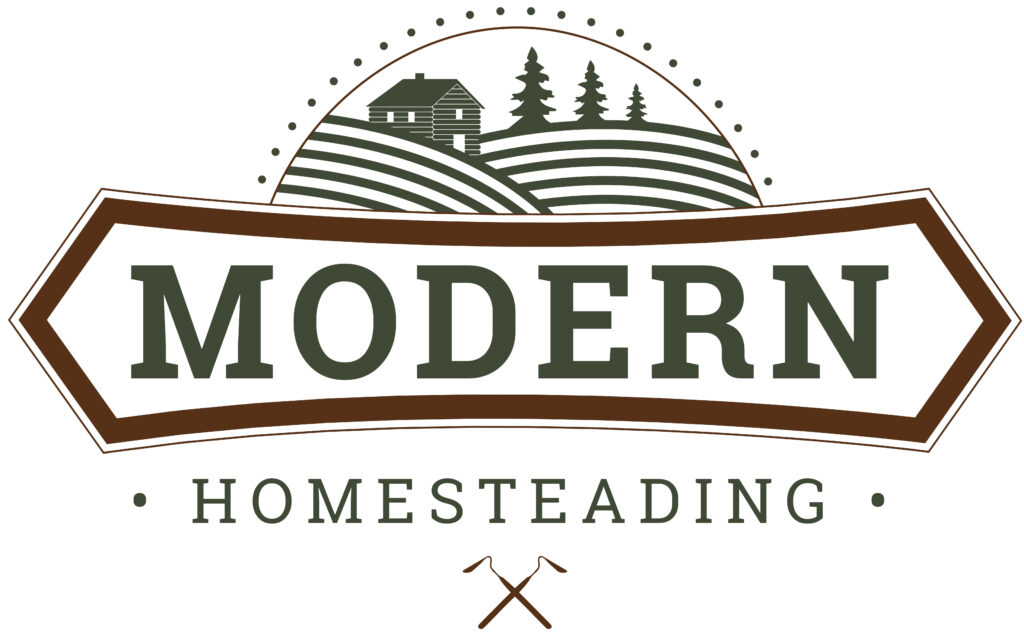
Take a Leap of Faith
Sometimes new projects require you to take a leap of faith. You don’t always need to know everything at the onset of a new project, but having an idea of what to expect is wise.
And so we have taken this leap of faith with our three four new Scottish Highland cows! I’m excited to continue to share our journey as we discover more about this unique breed.
If you want to discover new homesteading skills, you might want to take a leap of faith yourself and join us at the first annual Modern Homesteading Conference this summer (2023) in North Idaho.
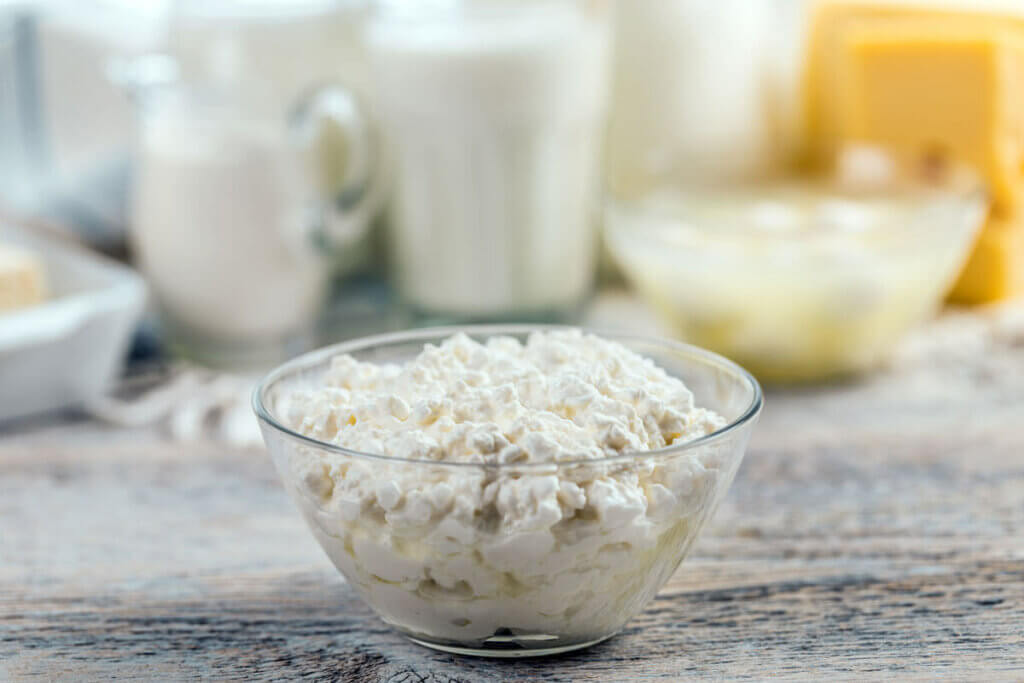
Other Posts You May Enjoy
- How to Preserve Dairy, Meat & Eggs
- 8 Things You Need to Know about Keeping a Family Milk Cow
- Stocking Up on Animal Feed (Buy Now, Save Later)
- Grow Your Own Livestock Feed
- Your Livestock Questions Answered
- How to Make Real Buttermilk (Cultured Buttermilk Recipe)
- Fermented Dairy: Why You Should Be Doing This Now
- How to Make Homemade Yogurt that’s Thick and Creamy
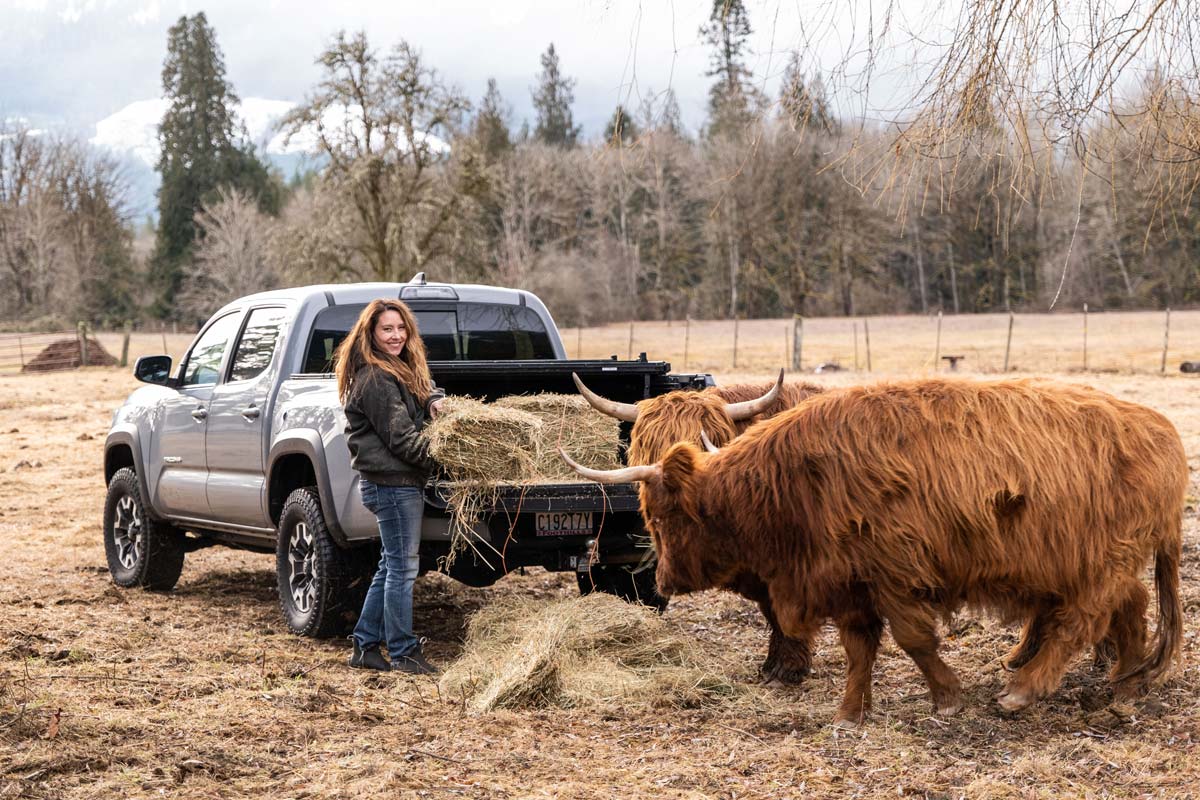
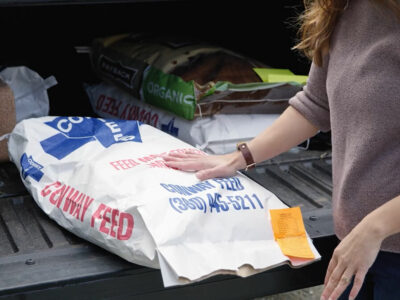
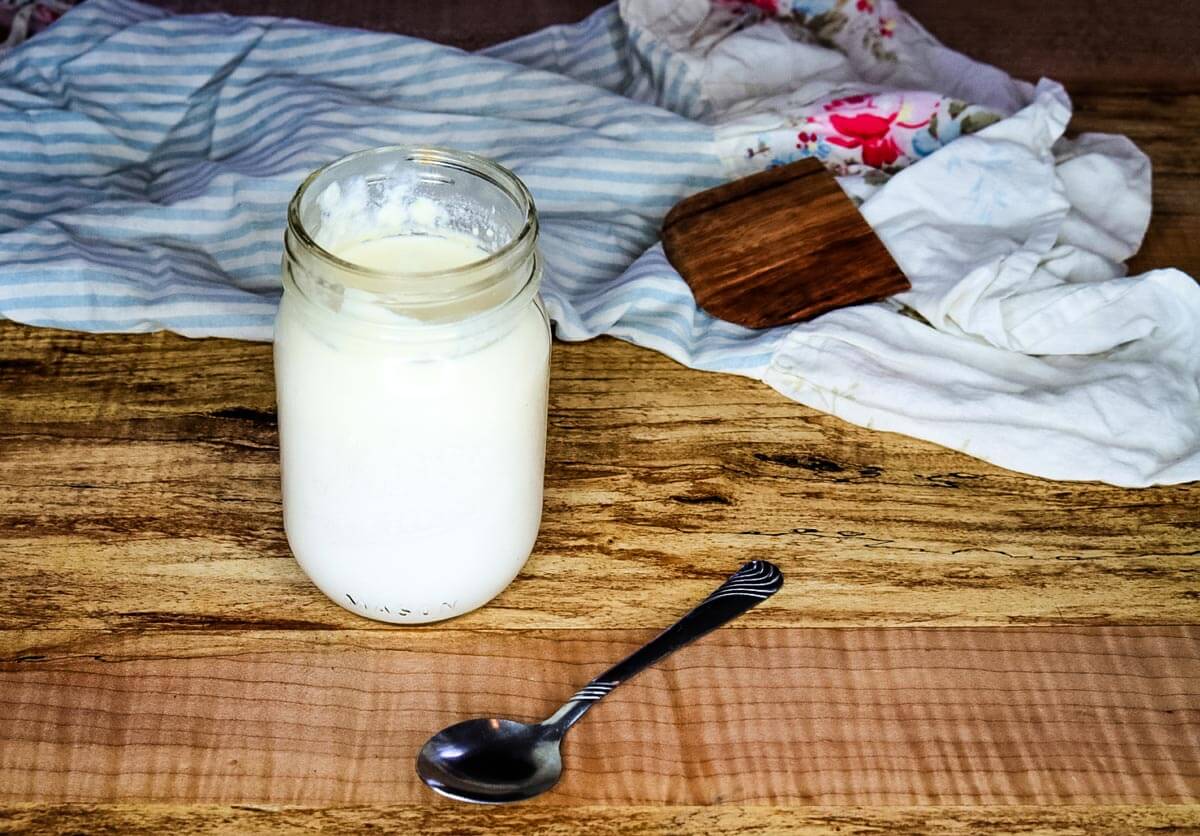
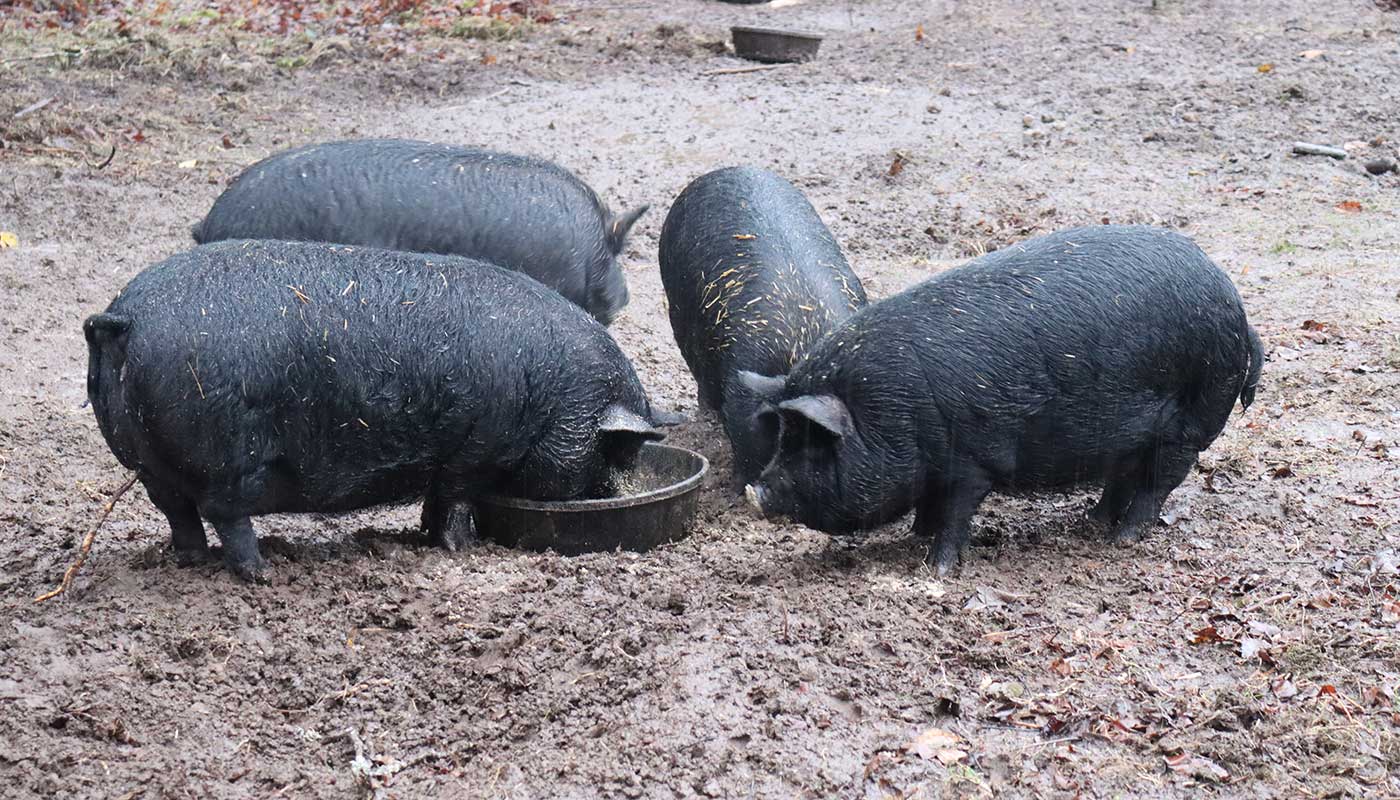
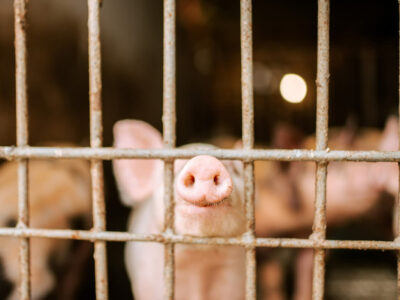

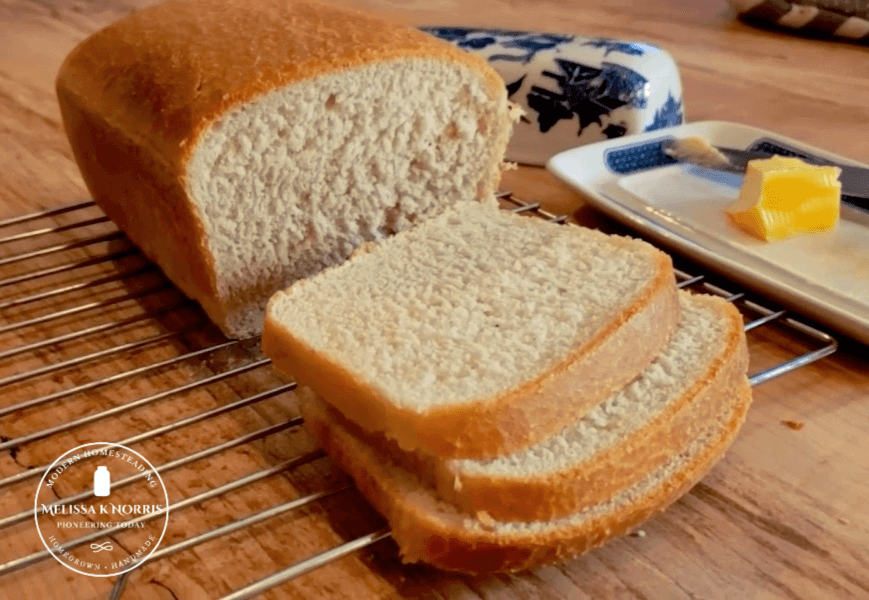
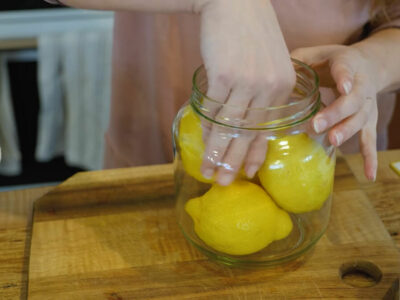



Hi Melissa,
I just ordered your book “everything worth preserving” and am so excited for it to arrive!
My Highland just had her first calf and I am just beginning to milk her! No much information out there on building a milking station for Horned Highlands…wondering if you have designed something for them? Love to see a video on that or how to build one for long horned milk cows. Thanks for all you do!
livin’ the Dream. God Bless you
I am waiting for the birth and picture of the baby Scottish Highland cows. You showed one picture in this blog, and I am ready for more. Looking forward to it.
Nice video. Too bad the wind made it a bit hard to understand at times. Hoof trimming is necessary for so many livestock to keep them healthy. May have been good to include a shot of the hooves after trimming but before releasing the cow but hey, things can move quicker than we can think about it. Keep enjoying.
I think that people with no experience raising cattle should not judge or even make comment on what the farmer should be doing. From the video, it seems to me that the cattle handled their necessary hoof trim very well for a first time. I was impressed by the the hoof trimmers’ set up. They are adorable cattle. Will be interested to see how they do going forward.
Love your Pod Cast on the Highland cows. Going to look into getting them.
I can confirm! Scottish Highlands are the best! ?. Our families been raising them for over 18 years now. My father in law has the largest herd in the family now with over 350 head. We raise them to sell as beef and breed stock. Excellent beef cows. We just finished up at the National Western Stock Show last week. It’s amazing how this breed has grown in popularity over the years. God Bless!
I am interesting in starting a family herd. Would you please send me contact information on where I might be able to purchase a few?
Hey John, you can call me at 719-310-5126 if your interested in getting a few head.
I would love to have a bull and cow to start my on herd. How much are they.
Still can not find the what it is you found. Looks like I am not the only one.
Can you send a direct link?
It’s in the video that’s above the second picture in this post at the 11-minute mark as stated above.
No luck here. I was in Brave browser and went “shields down” just in case it was being blocked. AND tried in Chrome. I give up.
Congratulations! I love your Hylanders. I too would love to give hugs to them too.
Great find on the property, it makes you wonder what the one room cabin looked like.
So enjoyed your post on the Scottish Highlanders! Can’t wait to see your first calf, but as they take longer guess I will have too!
Hi Melissa,
Do the Scottish Highlander cows produce A1 or A2 milk?
Thanks,
Deb Casey
Hi Melissa,
Do the Scottish Highlanders produce A1 or A2 milk?
Thanks,
Deb Casey
I LOVE Scottish Highlanders and have wanted a small herd for years. But I am older now and not in great health so I have to be satisfied enjoying yours. You have a wonderful place and I am so envious!
I LOVE Hairy Coos!!!! I go to a lot of Scottish highland games and a young Coo is generally there for viewing. I always tease my husband that I am going to get one. Unfortunately, we live in Southern climates. Will enjoy watching your journey raising Coos!
Check out Cool Creek Farm on Facebook. They raise them in Southern Mississippi. The cows just don’t get as fluffy in the winter.
Inspiring and DARLING! Thanks for sharing 🙂
Hi, so you had a recent email where it said you found something surprising on your farm. When I clicked on it, this is the page it took to me to and it doesn’t talk anything about finding anything on your farm… was that Clickbait or just a mistake?
It’s in the video, which is located right above the second picture of the highlanders in the post.
I sat through the video and saw how to make brownies and pie, and how to buy grain in bulk and various adds. There was no mention of you finding something.
I am also having trouble finding the video about finding something at the farm.
I live in LA, a state too hot for that line of furry cattle.
If given the opportunity would love to stay at your AirBnB…enjoyed the read!
I LOVE how excited you get about your cows and restoring the vintage cabin..all the dreams and plans! Go Norisses!!! I’d like to know what your rental plans and prices are, too.?
Hi Constance, thank you, if you click on NorrisFarmstead (I’ve linked it here) https://norrisfarmstead.com/ you’ll see where to go to view the prices (they vary based on day of week and the season).
I wish I knew 1/10 of the knowledge you have for growing and eating healthy I was raised by my dad and had to learn to cook by the seat of my pants!
Please send me some info about your rental plans and costs.
Thanks
if you click on NorrisFarmstead (I’ve linked it here) https://norrisfarmstead.com/ you’ll see where to go to view the prices (they vary based on the day of the week and the season, just put the dates you’re considering in the calendar and it will show the price).